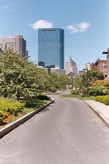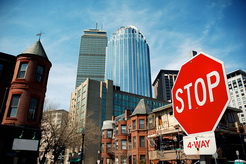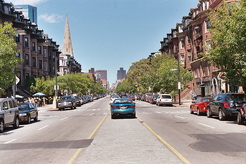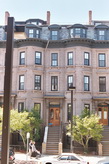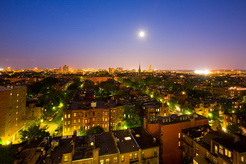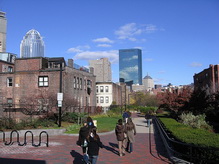Why visit / Interesting facts:
- Victorian brick row houses
- Boston Landmark District
- Listed in the National Register of Historic Places
Time required: 40 minutes
Web site: http://www.south-end-bos...
Public transport:
- Subway Orange Line: Back Bay
- Bus 43 towards Ruggle Station via Tremont
Address: South End, Boston, MA (south of Back Bay, centered on Tremont Street)
Photos: (see more photos)
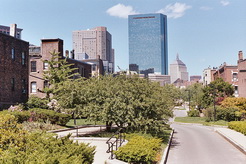
Photo: Robert Blackie
Things you need to know:
- The South End is a downtown Boston neighborhood that's best known for its diversity, its artistic and other cultural offerings, and for its concentration of Victorian brick row houses. It's one of the most popular places to live in the city
- The main (business) thoroughfares are Tremont and Washington Streets, from West Newton Street to Berkeley Street. It's south of the Back Bay, northwest of South Boston, northeast of Roxbury, north of Dorchester, and southwest of Bay Village
- The South End is one of the main (and best) restaurant districts in Boston, with a mix of cuisines, but often at a rather high price point. The range of restaurants include American Southern, French, Ethiopian, Brazilian, Indian, Italian, Korean, Greek, Middle Eastern, Cuban, Thai, and Japanese
- As a rather diverse neighborhood in this area, it integrates people of nearly every race, religion, and sexual orientation. The neighborhood first became diverse in the 1880s when Irish, Lebanese, Jewish, African-American, and Greek populations began to settle there. In the 1930s, many Canadians from the country's maritime provinces moved to the South End too. Beginning in the 1940s, many gay and lesbian people moved to the neighborhood, shortly followed by a growing Hispanic population
- Though the neighborhood houses both the wealthy and the poor, recent gentrification is possibly threatening this socioeconomic diversity, with poorer and non-white residents leave the area as housing prices go up
- South End is North America's largest extant Victorian residential district. It has mostly mid-19th century bow fronts, most often in Renaissance Revival, Italianate, and French Second Empire styles
- Used to be a tidal marsh, and was filled in from the 1830s to the 1870s, thanks to dirt and fill brought in from nearby Needham
- Until the 1950s, the South End was a jazz mecca, but only Wally's Paradise is still open
What to do there:
- Sit down and eat! There are plenty of options, from simple to extravagant
- Stroll around the neighborhood - during the day, look for hidden parks and gardens, or check out the especially charming Union Park Street; at night, stick to the main drag
- Check out one of the many art galleries in the area, or see if one of the First Friday Open Studios (allowing you to see 50+ artist studios) is coming up. You can also look for events at the Calderwood Pavilion and the Boston Center for the Arts
Tips & Insights:
- If you're planning to eat dinner in the South End, try to get reservations!
- The most expensive eateries are close to the intersection of Tremont Street and Union Park Street. For cheaper spots, wander to other parts of the neighborhood
- There isn't a very direct subway route to the South End. We recommend you just take the subway orange line to Back Bay station then walk to the main drag - it's a great way to get a sense of the neighborhood, and the walk isn't long regardless
